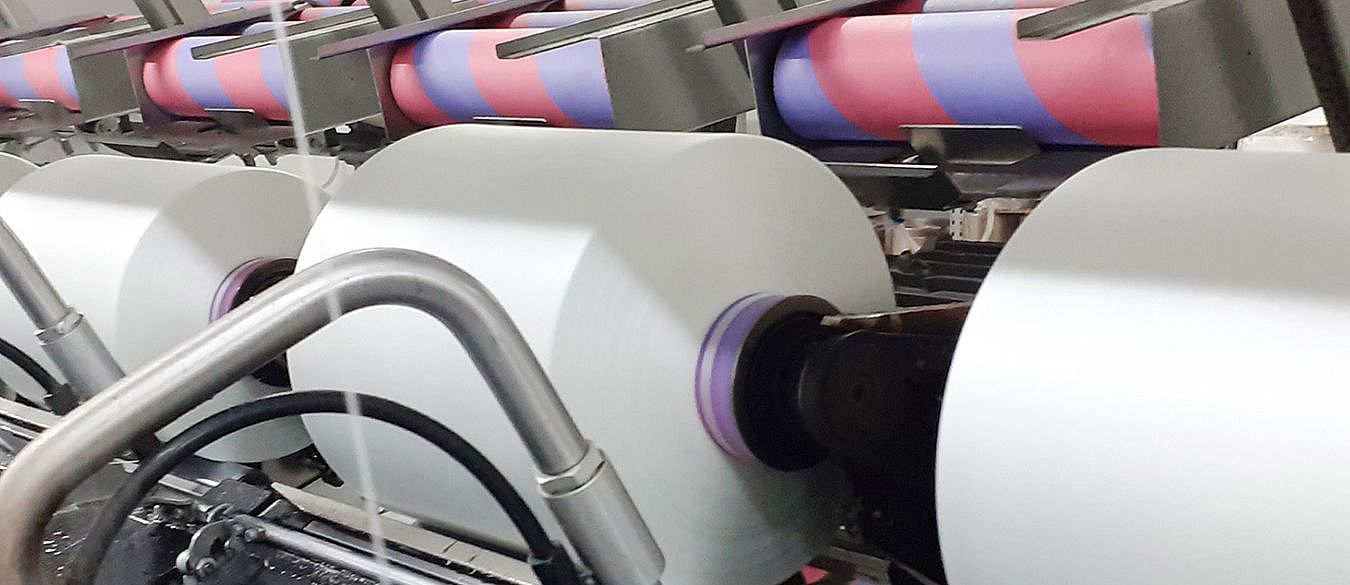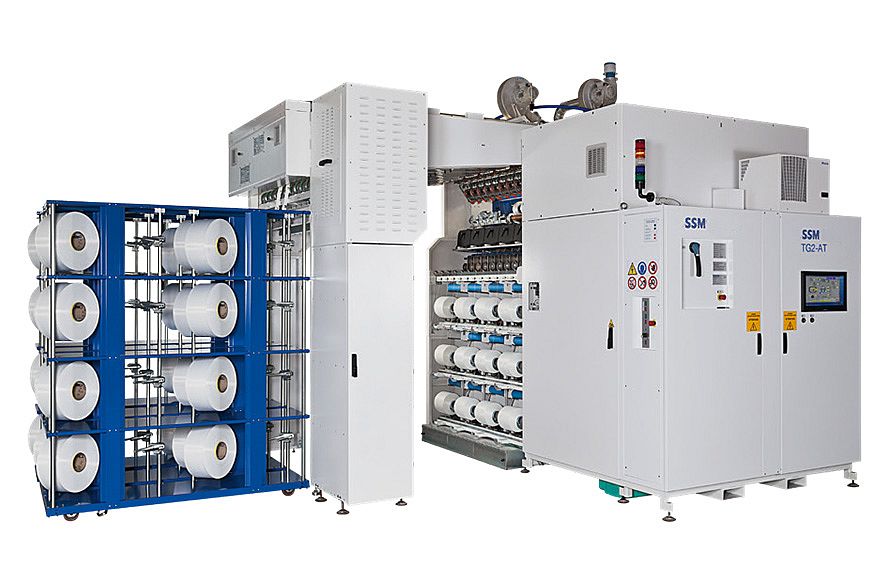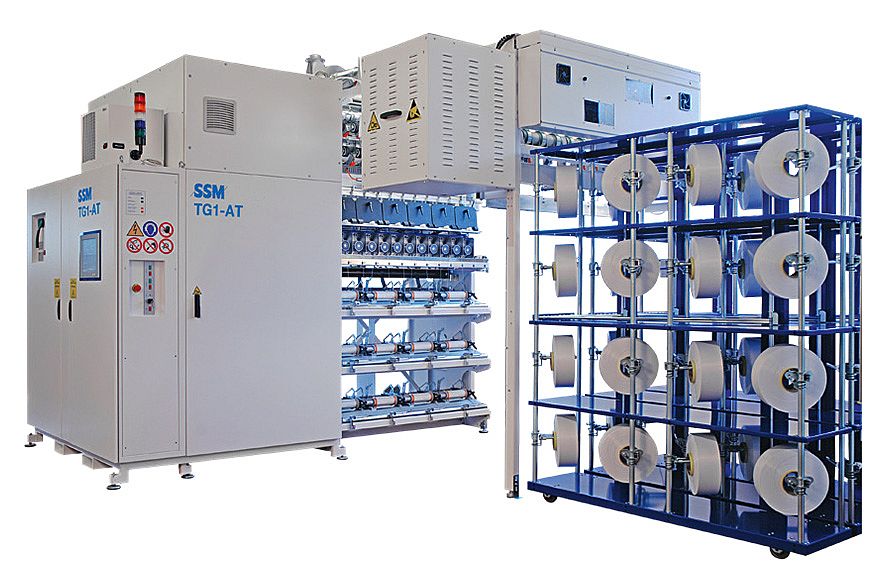The comprehensive range of SSM air texturing machines covers all customer needs, even the most demanding. The DP5-T and TG-AT series produce superior air textured yarns (ATY), allowing higher speed in downstream processes.
Air Texturing Machines

DP5-T air texturing machine

The DP5-T air texturing machine is designed for the flexible production of high-quality air-textured yarns. POY as well as FDY/FOY, and all different types of continuous filaments (PES, PA, PP, glass etc.) can be processed into a wide range of yarns for various applications.
Technical data
| DP5-T automatic air texturing machine | |
|---|---|
| Type of winding | DIGICONE or precision |
| Mechanical speed | up to 1 500 m/min |
| Drive | individually driven and controlled |
| Yarn laying | fastflex electronic yarn laying system |
| Tubes/Package shape | cylindrical tubes, freely programmable |
| Traverse length | 100 – 270 mm infinitely variable |
| Yarns/count range DP5-TF - yarn path type 3 | PES and PP up to 1 500 dtex, PA up to 650 dtex |
| Yarns/count range DP5-TC - yarn path type 1, 3 | PES and PP up to 4 000 dtex PA up to 1 400 dtex |
| Yarns/count range DP5-TC - yarn path type 6 | PES and PP up to 2 000 dtex, PA up to 700 dtex |
| Number of spindles min./max. | 5/40 (single sided) |
| Supply package diameter | up to 400 mm (on rotary creel) |
Downloads
TG2-AT automatic air texturing machine

The TG2-AT air texturing machine comes with an individual, frontal doffing system to allow double sided machine layout (one full package and one empty tube in the cradle whilst a package is being processed). Designed for the cost-efficient production of high quality air texturized yarns made of POY or FDY polyester, polyamide and polypropylene and ranging from fine to medium final counts, the TG2-AT meet all requirements.
Technical data
| TG2-AT automatic air texturing machine | |
|---|---|
| Type of winding | random |
| Mechanical speed | up to 1 200 m/min (speed of overfeed shafts) |
| Drive | individually controlled line shafts |
| Tubes/Package shape | cylindrical or bi-conical, up to ⌀ 240 mm |
| Traverse length | 190 or 245 mm |
| Yarns | PA, PP, PES; POY & FDY |
| Yarn count | 37 – 600 den |
| Layout | double sided |
| Number of spindles min./max. | 24/288 |
| Supply package | 2 ends and stand-by per position: ≤ ⌀ 450 mm, ≤ 250 mm tube length |
Downloads
TG1-AT manual air texturing machine

The manual TG1-AT air texturing machine is designed for the cost efficient production of high quality air texturized yarns made of POY or FDY polyester, polyamide and polypropylene and ranging from fine to medium final counts.
Technical data
| TG1-AT manual air texturing machine | |
|---|---|
| Type of winding | random |
| Mechanical speed | up to 1 200 m/min (speed of overfeed shafts) |
| Drive | individually controlled line shafts |
| Tubes/Package shape | cylindrical or bi-conical, up to ⌀ 250 mm |
| Traverse length | 190 or 245 mm |
| Yarns | PA, PP, PES; POY & FDY |
| Yarn count | 50 – 700 den |
| Layout | double sided |
| Number of spindles min./max. | 24/288 |
| Supply package | 2 ends and stand-by per position: ≤ ⌀ 450 mm, ≤ 250 mm tube length |
Downloads
Downloads
SSM Product Range – Brochure

Contact
SSM always wants to answer queries quickly and competently.